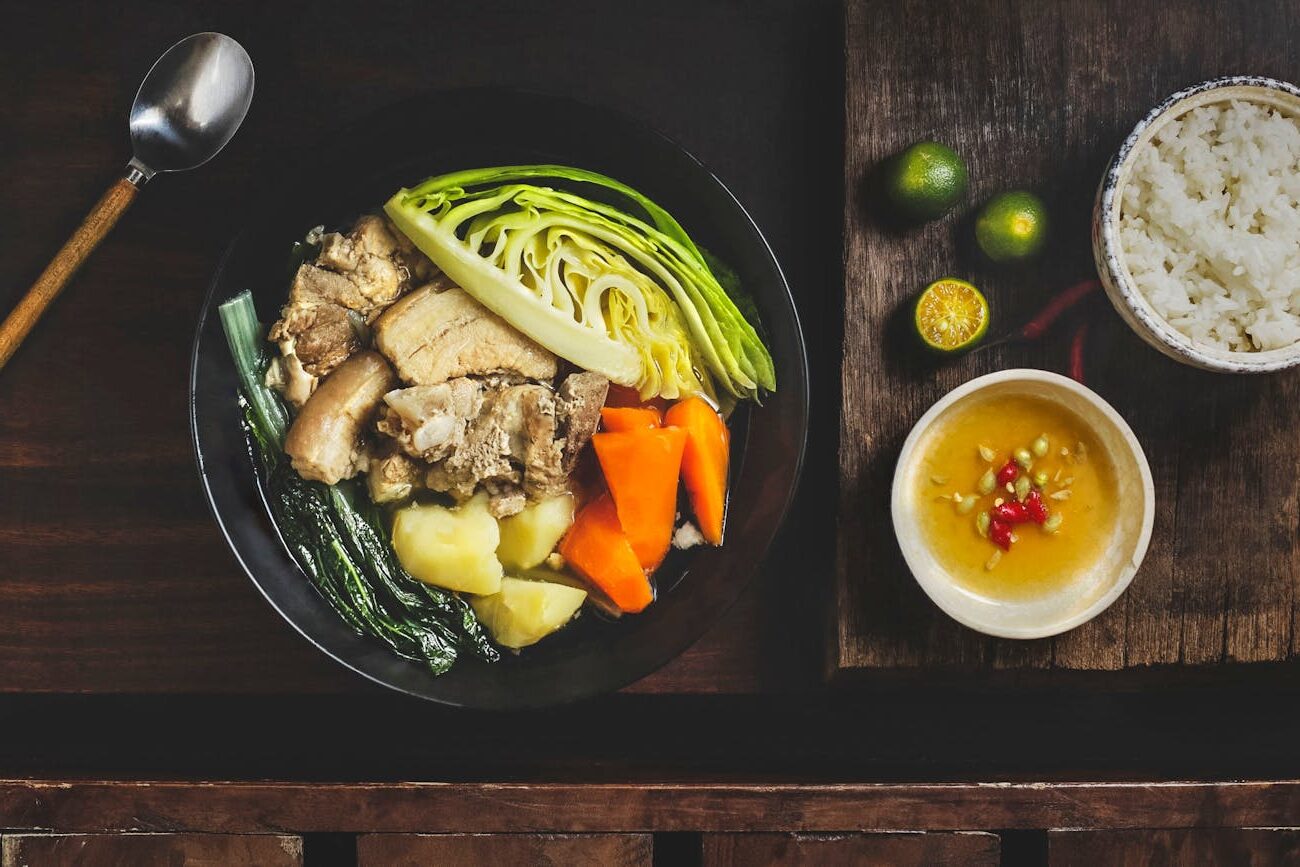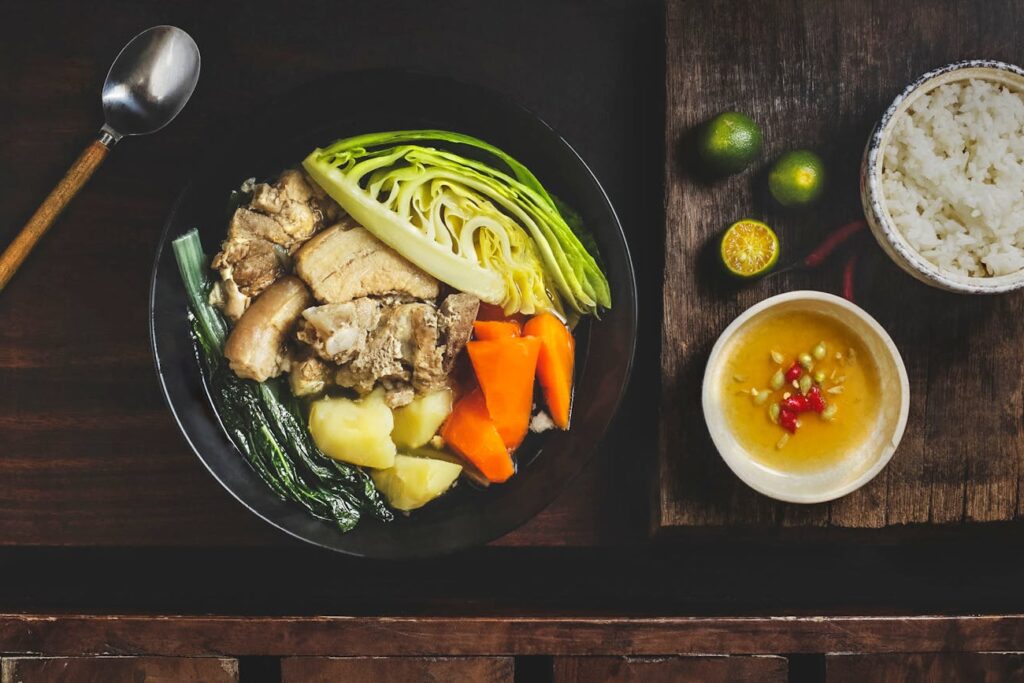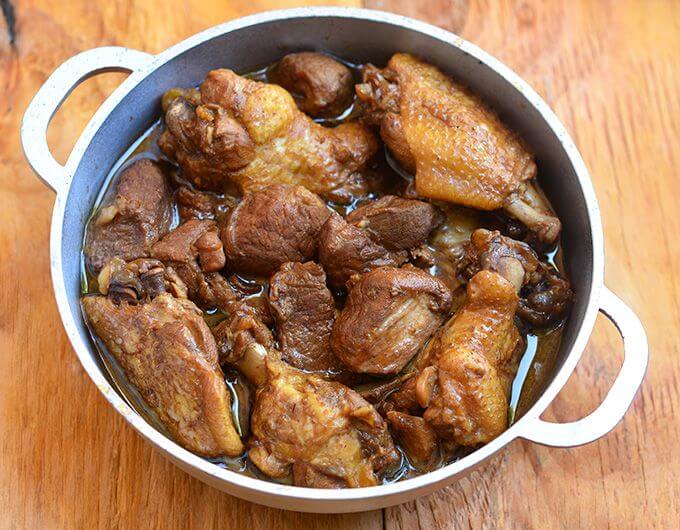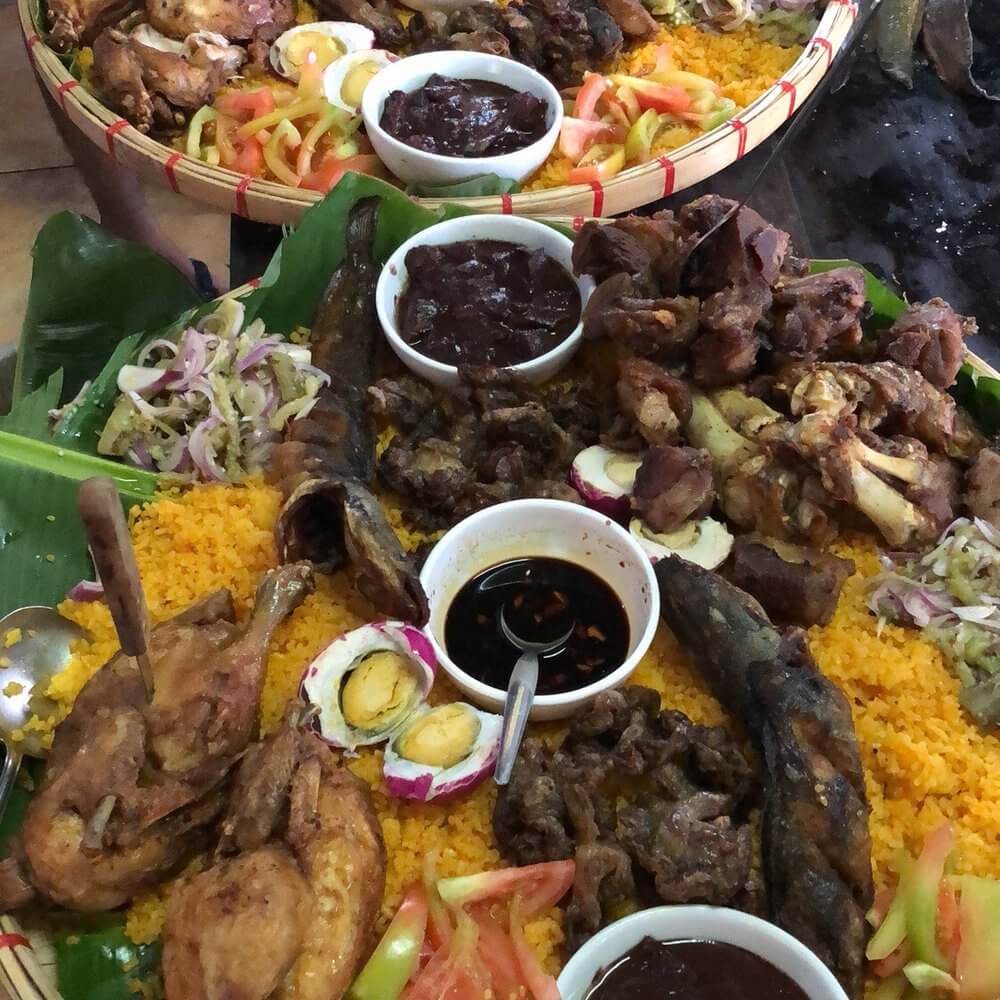Filipino Culinary Regions
Filipino cuisine is a rich tapestry of regional flavors, each with its own distinctive dishes. Here are some regions in the Philippines known for their iconic dishes.
Cebu: Home of Lechon
Cebu is celebrated nationwide for its mouth-watering lechon. This famous Filipino dish involves roasting a whole pig, seasoned lightly and cooked over an open flame. Lechon is a must-have at weddings, holidays, and festivals, known for its crispy skin and succulent meat. In Cebu, Rico’s Lechon is a top recommendation for experiencing perfect lechon. The crispy skin and flavorful meat make it a stand-out choice for filipino food specialties.
- Key Spot: Rico’s Lechon
Pampanga: Savoring Sisig
Pampanga is recognized as the culinary capital of the Philippines, and sisig is its crown jewel. Originating in the province over 40 years ago, sisig consists of chopped pig’s face served on a sizzling plate. It’s often paired with a cold beer. Mila’s Tokwa’t Baboy in Pampanga serves an outstanding variation of this dish, making it a must-visit for those eager to taste traditional filipino dishes.
- Key Spot: Mila’s Tokwa’t Baboy
Ilocos: Delight in Bagnet
Ilocos offers a culinary adventure for food lovers, particularly with its famous bagnet. This deep-fried pork belly dish is crispy, flavorful, and satisfying. Herencia Cafe in Paoay, Ilocos Norte is renowned for its traditional Ilocano cooking, including their incredible bagnet. The cafe also serves unique pizza flavors like the “pinakbet pizza,” incorporating indigenous filipino ingredients for a novel twist.
| Dish | Description | Key Spot |
|---|---|---|
| Bagnet | Deep-fried pork belly | Herencia Cafe |
| Pinakbet Pizza | Unique pizza flavor | Herencia Cafe |
Bacolod: Grilled Chicken Inasal
Bacolod is famed for its chicken inasal, a marinated grilled chicken dish bursting with flavor. Marinated in a vinegar and calamansi mixture, and grilled over charcoal, this dish is a treat you’ll not want to miss. Aida’s Manokan is the go-to place in Bacolod City for authentic chicken inasal. The smoky, tender chicken served on a stick is a staple of best filipino regional cuisine.
- Key Spot: Aida’s Manokan
The vibrant culinary traditions of Cebu, Pampanga, Ilocos, and Bacolod highlight the diversity and richness of Filipino cuisine. From crispy lechon to sizzling sisig, each region offers a unique flavor experience that contributes to the Philippines’ rich cultural heritage. For more popular philippine food recipes, be sure to explore our culinary archives.

Photo by Eiliv Aceron on Pexels
Iconic Filipino Dishes
Discover some of the most iconic traditional Filipino dishes that reflect the rich culinary heritage of the Philippines. These dishes are not only flavorful but also hold cultural significance for many Filipinos.
Balut: Unique Filipino Delicacy
Balut is an adventurous and intriguing culinary experience. It’s made from a fertilized duck egg containing a developing duck embryo that’s about two to three weeks old. The egg is boiled or steamed until the embryo is fully cooked. The result is a delicacy with a texture similar to a soft-boiled egg, enjoyed with a pinch of salt and vinegar. For more Filipino food specialties, visit our page on filipino food specialties.
| Food Item | Main Ingredient | Texture | Common Serving |
|---|---|---|---|
| Balut | Duck egg with embryo | Soft-boiled | With salt and vinegar |
Halo-Halo: Colorful Filipino Dessert
Halo-Halo is a festive Filipino dessert known for its colorful presentation and sweet, mixed flavors. The name “Halo-Halo” means “mix-mix” in Filipino, representing the variety of ingredients used in this dessert. It includes shaved ice, evaporated milk, assorted fruits, tapioca, sweetened beans, and sweet potato. Halo-Halo is a refreshing treat especially popular during hot Philippine summers. If you’re interested in other popular Philippine recipes, check out popular philippine food recipes.
| Ingredient | Description |
|---|---|
| Shaved Ice | Cold and fine |
| Evaporated Milk | Creamy |
| Assorted Fruits | Diverse and sweet |
| Tapioca | Chewy |
| Sweet Potato | Soft and sweet |
Lumpia: Filipino Spring Rolls
Lumpia is the Filipino take on spring rolls, influenced by Chinese cuisine. They consist of a mixture of minced pork, chicken, cabbage, and other vegetables wrapped in a thin pastry shell and deep-fried to crispy perfection. Lumpia is often served with a dipping sauce, such as sweet chili sauce. These rolls are popular as appetizers or snacks. For more on indigenous ingredients in Filipino cuisine, explore our section on indigenous filipino ingredients.
| Type | Main Ingredients | Preparation |
|---|---|---|
| Lumpia | Pork, chicken, cabbage, vegetables | Deep-fried |
Kare-Kare: Traditional Filipino Stew
Kare-Kare is a savory Filipino stew traditionally made with oxtail and ox tripe, heavily seasoned with peanuts. It often includes vegetables like string beans and leafy greens and is commonly served as a Sunday family meal. This dish is usually accompanied by shrimp paste (bagoong) to enhance its flavor. Kare-Kare is a comfort food that brings families together, often enjoyed after church. For more on regional cuisine, visit best filipino regional cuisine.
| Food Item | Main Ingredients | Accompaniment |
|---|---|---|
| Kare-Kare | Oxtail, ox tripe, peanuts, vegetables | Shrimp paste (bagoong) |
Explore the rich and diverse world of Filipino cuisine through these iconic dishes that offer a taste of the Philippines’ culinary heritage.
Share this post: on Twitter on Facebook



